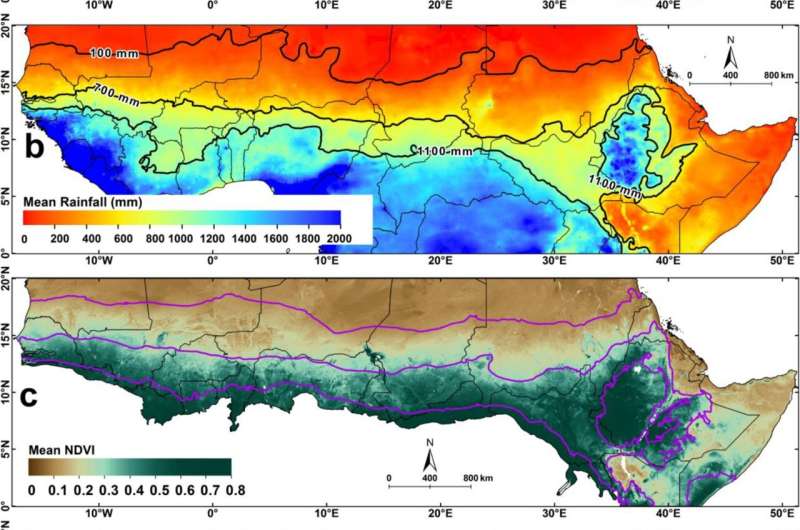This article has been reviewed according to Science X's editorial process and policies. Editors have highlighted the following attributes while ensuring the content's credibility:
fact-checked
trusted source
proofread
Climatic and non-climatic factors found to affect vegetation greenness in Sudano-Sahelian region of Africa

Fully understanding vegetation dynamics and potential drivers in the Sudano-Sahelian region of Africa is crucial for a better understanding of long-term changes and sustainable management of dryland ecosystems.
A research team from the Aerospace Information Research Institute (AIR) of the Chinese Academy of Sciences (CAS) has analyzed trends in vegetation greenness at the pixel scale using time series of satellite data in the Sudano-Sahelian region during 2001–2020 and quantified the relative contributions of climatic factors and non-climatic factors in specific sub-regions. The study was published in Regional Environmental Change on June 28.
Using MODIS Normalized Difference Vegetation Index (NDVI) as a proxy for vegetation greenness, the researchers found that greening was widespread across the Sudano-Sahelian region, while browning was clustered in central West Africa.
They applied a correlation-based conceptual attribution model to study rainfall-driven changes. Results showed that only nearly half of the areas with vegetation greening could be explained by long-term rainfall variability, while most of the areas with browning trends were not related to rainfall variability. Greening/browning vegetation trends not caused by rainfall variability could be explained by the non-climatic factors, e.g., land use/land cover (LULC) change and fire impact.
LULC changes have significant local effects on vegetation greenness in specific sub-regions of the Sudano-Sahelian. By analyzing the fractional abundance of LULC classes within each NDVI pixel, the research team found that gains (i.e., increases in the fractional abundance of LULC classes) in cropland and natural vegetation associated with positive land management were likely the dominant drivers of greening in Senegal and Ethiopia. The combined impacts of rainfall variability and LULC changes contributed to greening trends in Mali and Sudan.
In contrast, vegetation browning in central West Africa appeared to be driven by cropland gain and natural vegetation loss (i.e., decrease in the fractional abundance of a LULC class) associated with extensive agricultural production activities.
More information: Yelong Zeng et al, Changes in vegetation greenness related to climatic and non-climatic factors in the Sudano-Sahelian region, Regional Environmental Change (2023). DOI: 10.1007/s10113-023-02084-5
Provided by Chinese Academy of Sciences




















